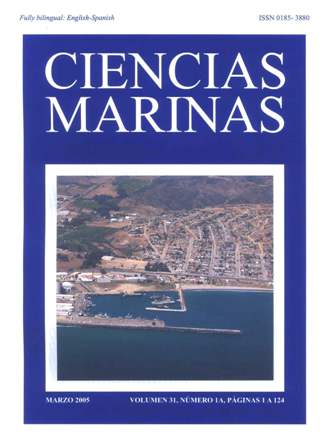Assessing the potential toxicity of marine sediments found in petroleum industry areas: A new approach based on responses of postlarval shrimp
Main Article Content
Abstract
In this study we tested the toxicity of bulk sediment from the northeastern area of Todos os Santos Bay, Bahia, Brazil, to evaluate environmental impact induced by 50 years of exposure to the local petroleum industry (Petrobras). Sediment samples were collected during one year, at three-month intervals, from four sites in areas of oil extraction (Ilha das Fontes, station 4), transportation (Ilhas de Madre de Deus and Pati, stations 2 and 3) and refinement (RELAM, station 1). Two reference stations (5 and 6) were located outside the petroleum influence area, to the south of the bay. Static bioassays were conducted for 96 h, using 7–8 day old Litopenaeus vannamei postlarvae (PL). The assays were conducted in 2.5 L plastic jars containing 200 g of surface (1 cm deep) bulk sediment covered by 2 L of dilution water (filtered seawater, 28 ppt salinity, 27 + 2ºC and DO under saturation). Fifteen exposed PL in each jar were fed daily on 60 recently hatched Artemia salina nauplii. Physico-chemical parameters were monitored. Mortality and dry weight gain were taken as end-points. The PL mortality data obtained for sediment from the Petrobras stations in comparison to the data from the reference stations were not significantly different (P > 0.05); however, the dry weight gain showed significant differences among stations. A maximum value was reached at station 5 (reference area) and a minimum at station 1 (RELAM refinery). Stations 2 and 3 in petroleum transportation areas did not show significant differences (P > 0.05). To evaluate the sensitivity of this bulk-sediment test in detecting contaminant effects generated by the petroleum industry, the toxicity data were considered in terms of the hydrocarbon levels analyzed in sediments from the same Petrobras areas and in one of the control areas, located outside the bay. The results support the assumption that the bulksediment bioassay on penaeid PL is a suitable methodology not only to distinguish between impacted and relatively unperturbed environments, but also to separate the different degrees of impact among areas subjected to petroleum industry activities in the coastal environment.
Downloads
Article Details
This is an open access article distributed under a Creative Commons Attribution 4.0 License, which allows you to share and adapt the work, as long as you give appropriate credit to the original author(s) and the source, provide a link to the Creative Commons license, and indicate if changes were made. Figures, tables and other elements in the article are included in the article’s CC BY 4.0 license, unless otherwise indicated. The journal title is protected by copyrights and not subject to this license. Full license deed can be viewed here.

